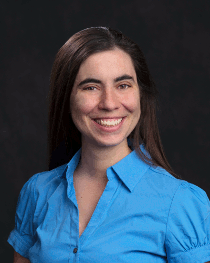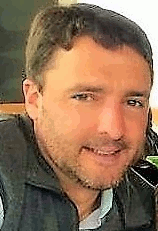INTERVIEW: Animal Proteins in Feed in the US and Europe—Regulatory and Market Challenges
Source: Feedinfo News Service
(dated 24/07/2017)
24 July 2017- Feedstuffs derived from raw materials of animal origin—including animal proteins, fats, oils, and more specialized meals—are irreversibly woven into the animal feed and production industries. They provide feed manufacturers with an easily digestible source of proteins and other essential nutrients. In turn, the feed industry provides the animal production industry with an outlet for parts of the raw materials that would otherwise be wasted, contributing to the sustainability of the industry.

Yet the nature of this essential role is often poorly understood by both an emotionally-driven public and the lawmakers responsive to them, producing ill-considered fads and regulations. To understand this dynamic better, Feedinfo News Service spoke to industry representatives on both sides of the Atlantic, including Dr. Martin Alm, Technical Director of the European Fat Processors and Renderers Association, and two representatives of the US and Canada’s National Renderers Association: Dr. Jessica Meisinger, Director of Scientific Education and Communication, and Kent Swisher, VP of International Programs. [On the right-hand picture Dr. Martin Alm, Technical Director European Fat Processors and Renderers Association]
Naturally, of course, the two markets are starting in very different places, because of each continent’s experience with BSE. European limitations on which animal by-products may be used in feed for food-producing animals, as well as which animals may consume feed with animal by-products both tend to be stricter than those of the US. European rules tend to be categorically restrictive: no use of mammalian meat and bone meal in animal feed, no intra-species recycling (e.g. pigs receiving porcine meal), etc. Meanwhile, the US rules tend to be more highly targeted. In the US, ruminant animal proteins cannot, of course, be fed to other ruminants, nor can ruminants consume any mammalian protein; moreover, a 2008 law prohibits the riskiest cattle tissues (brain, spinal cord, nerve ganglia) from being used in all animal feed; however, outside of that, rules are relatively flexible, allowing the diets of monogastrics to include processed animal proteins, and even allowing intra-species feeding. Contrarily, the EU barely even allows the feeding of even the highest quality, most tightly regulated processed animal proteins to food production animals at all. Non-ruminant processed animal proteins are currently only used in specific types of animal feed in Europe, namely pet food and aqua feed—the latter of which was only made legal in 2013, after a 12-year ban on feeding processed animal proteins to food production animals in the EU. This means that, in Europe, PAPs are off-limits for species such as poultry, which in the US are traditionally the largest consumers of PAPs among all the different species of production animal.

It is indeed foreseen that these restrictions be relaxed in the case of monogastric animals being fed monogastric (non-ruminant) PAP in Europe, but progress is slow, as the European Commission is “understandably cautious,” to quote Dr. Alm. Concretely, before any change to this regime can be instituted, a test allowing the identification of the species of origin of processed animal protein had to be devised. “The industry has been working to assemble the scientific case and demonstrate that its governance and professional standards are of the highest order,” explains Dr. Alm. “The tests took a long time to develop because they need to discriminate false positives caused by permitted material in feed such as dairy by-products. The tests are ready and in the process of approval by the European Commission and we hope they will be available to use in the next twelve months.”
[At the left Dr. Jessica Meisinger, Director of Scientific Education and Communication National Renderers Association]
Meanwhile, the stakes are high, particularly in terms of sustainability. As Dr. Meisinger points out, “taking [animal proteins] out requires something else to be put back in. A lot of times those are virgin use ingredients,” such as soy or fish. “Rendering is absolutely vital for agricultural sustainability.” Dr. Alm concurs: “At present, the EU imports 70% of its protein demand from third countries so import substitutions will be important for PAP.” He is especially positive about the substance’s utility to the poultry and egg segments of the market, because of its attractive phosphorous profile. “The phosphorous content, which is important for animal bone health, is highly digestible and reduces the environmental load in the manure.”

Yet the potential for PAPs in Europe is not only limited by the size of the market but also by the willingness of consumers to accept this change. Dr. Alm is optimistic about this factor, saying “early indications are that there would be consumer acceptance of pig and poultry meat that had PAPs in the ration, provided there is good information about resource use efficiency and prevention of land use change – particularly deforestation of rainforests [if substituted for a protein such as soya].” However, as the American experience has shown, consumers are not always rational about sustainability claims. Dr. Meisinger, for example, is particularly exasperated with the emerging “vegetarian-fed” label for broilers and layers. “It’s all marketing. Chickens are not naturally vegetarians, chickens are absolutely not vegetarians…anyone who’s ever been around a chicken knows that’s not true. The main problem is the people who care about these vegetarian diets tend to also be the people who care a lot about sustainability.” Mr. Swisher cites Informa Economics figures which estimate that around 25% of US broiler production is subject to an “all-veg diet” and this segment is expected to attain 35%.
[At the right Kent Swisher, VP of International Programs National Renderers Association]
Still, although the domestic market for PAPs might be increasingly complicated, the hunger for PAPs on the world market remains sizeable. Mr. Swisher cites Indonesia and China as two booming export destinations, important because of the significant size and growth trajectory of their poultry and aqua markets. Chile, with its massive salmon export sector, is also a significant consumer. “If you have chickens, and you have fish, and (though not as much) if you have pets, and if you don’t have that much arable land to grow soybean meal, that’s a good market,” Mr. Swisher acknowledges. And in the realm of exports, at least, the things are increasingly looking up for European producers. “Non-ruminant PAP has been available for export since 2013 but with bilateral agreements only. This requirement was repealed in 2016 which led to some interpretation difficulties from some member states. From July 1, this year ruminant PAP is also permitted for export. Importing countries apply their own rules to the reuse of PAP within the OIE rules on controlling animal diseases,” explains Dr. Alm. “Demand for non-ruminant PAP has been good and we expect ruminant PAP also to gain a share in export markets. Long-term, price and demand from domestic users will affect export rates but the increase in exports has been good news for the European rendering industry.”
This change was long called for by the European renderers, who insisted it was irrational that a product which could legally be used in other countries could not be exported by European manufacturers, despite their world-class safety standards. And for producers on both sides of the pond, the safety of their products is one of the most persuasive arguments they can deploy. Mr. Swisher reasons that the heat of processing for animal protein meals is high enough to kill bacterial and viral pathogens such as bird flu, while his colleague Dr. Meisinger points out that those participating in the industry are subject to a substantial amount of internal testing, customer audits and regulatory inspections, increasing the system’s ability to detect and intercept any irregularity. For his part, Dr. Alm notes that the European system has multiple safety measures built in: “European legislation takes a precautionary approach to suppress the development of any recycled disease even where there is no scientific evidence of any specific disease risk.” All are eager for their sector’s sustainability and safety credentials to be better understood to ensure this unique ingredient has an optimal impact on animal diets worldwide. As Dr. Meisinger says, “if you think about production agriculture as the top half of a circle, rendering is the bottom half of that circle, it’s what makes the whole process sustainable. Americans choose not to eat about 50% of an animal. That’s a lot of leftovers.”